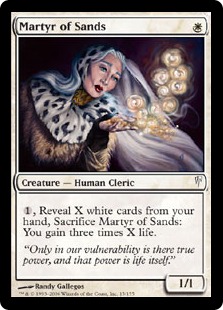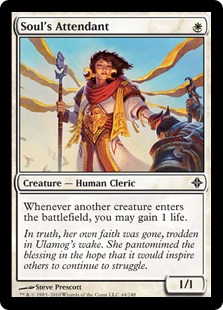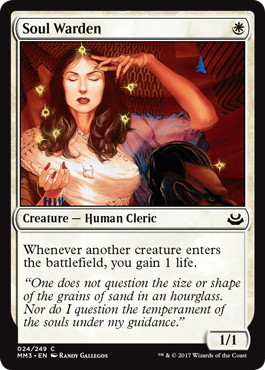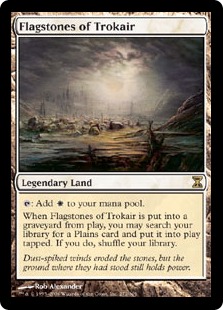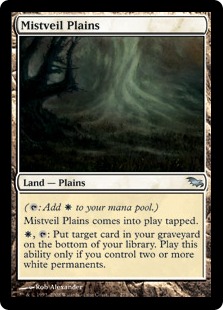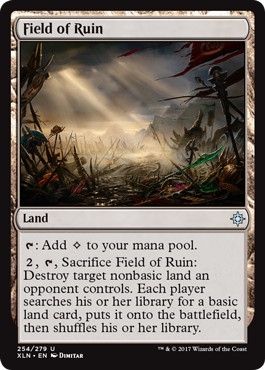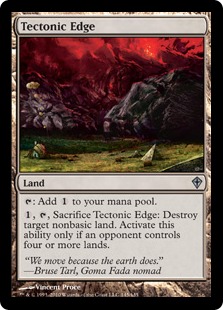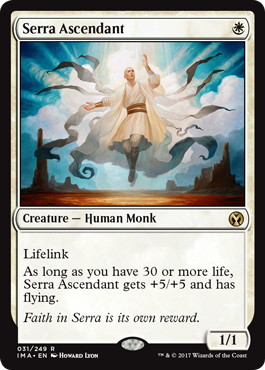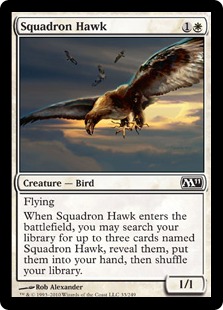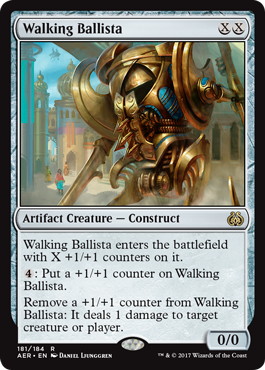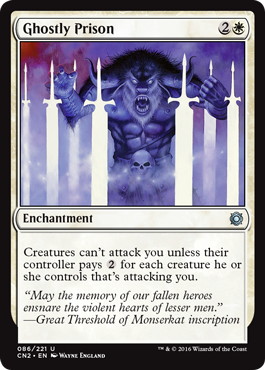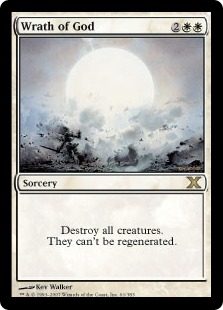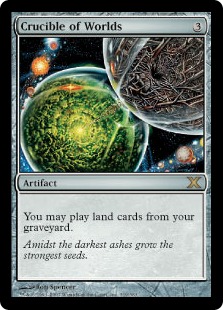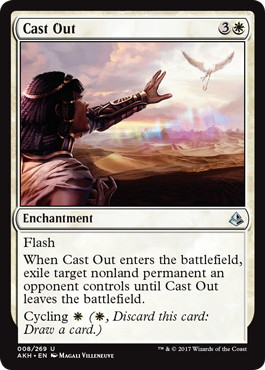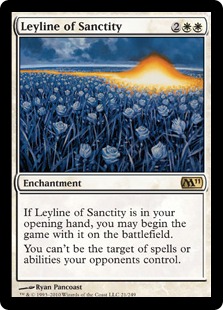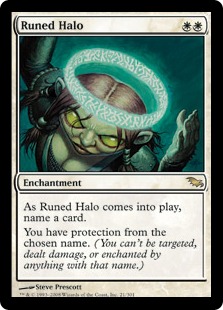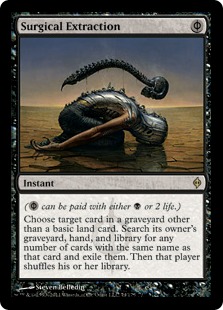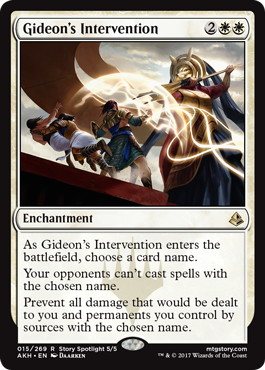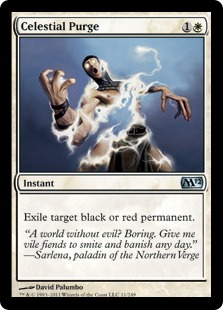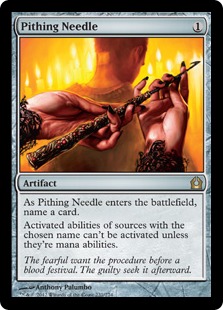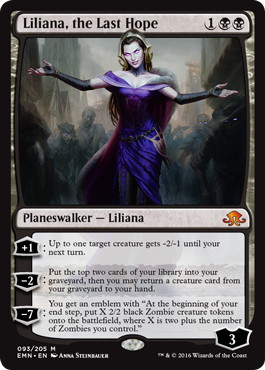Hi!
Today I want to talk about my favorite Modern deck. While it might not be a Tier 1, it’s one of my Magic Online decks, and I even got some good results with it. Welcome to Martyr Control.
The Deck
Merlin, a player from my hometown has championed this deck forever. After meeting and talking about the deck a few times, I finally decided to try it, even though it looked very bad to my eyes. However, after he taught me how most matchups worked, and I started winning a fair amount of times with the deck.
This deck doesn’t work the same way as the Soul Sister decks we’ve seen in Modern, since they are creature-based and work on a different axis. That deck is mostly an aggro deck that happens to win a lot of life to crush the aggro vs. aggro matchups. Here, we’re playing control.
It took me a while to learn to play all the matchups, but once I did I found myself considering this deck perfectly tournament playable. In fact, I even qualified for a Pro Tour playing a similar list at Grand Prix Milan some years ago! It’s still one of my proudest Magic accomplishments, heh.
Obviously, Modern has changed. Back in the day, 《Birthing Pod》 was still legal, but some of the new decks around are good news for 《Martyr》.
Here’s my list at this moment:
- Javier Dominguez
- – Martyr Control
2 《Mistveil Plains》
3 《Flooded Strand》
4 《Flagstones of Trokair》
4 《Ghost Quarter》
3 《Tectonic Edge》
1 《Field of Ruin》
-Land (23)- 1 《Walking Ballista》
4 《Martyr of Sands》
3 《Weathered Wayfarer》
2 《Serra Ascendant》
4 《Squadron Hawk》
2 《Ranger of Eos》
-Creature (16)-
4 《Wrath of God》
2 《Runed Halo》
4 《Ghostly Prison》
3 《Leyline of Sanctity》
2 《Cast Out》
2 《Crucible of Worlds》
-Spell (21)-
2 《Rule of Law》
2 《Grafdigger's Cage》
2 《Relic of Progenitus》
1 《Disenchant》
1 《Celestial Purge》
1 《Stony Silence》
1 《Gideon's Intervention》
1 《Pithing Needle》
1 《Ratchet Bomb》
1 《Elspeth, Sun's Champion》
-Sideboard (15)-
This deck operates as a control deck in many matchups. However, with so many creatures, sometimes our best chance to win is to apply pressure. Identifying when we should plan for a long game and when to attack to close it fast is one of the hardest decisions when playing this deck. Overall, I find this deck very challenging to play.
The Manabase
With enough basics, the white part is quite simple. 《Flagstones of Trokair》 does a good job here thinning our deck. Remember all the 《Plains》-fetching cards can search for 《Mistveil Plains》. This 《Plains》 card is what ensures we have a better long game, so if there are land-destruction lands in front of us, sometimes it’s better to leave them in our library, where they are usually safe.
These lands are critical for Martyr Control. Essentially, in many matchups we are just a land destruction deck, and those are our land destruction spells. They are our tools to leave our opponents without mana, which is often enough to trump any late game plan they could have. I like to use them quite aggressively. This is very important against decks like Grixis Shadow, where they have a super low land count but at the same time, if they get enough mana, they can do really powerful things.
It’s good to have an approximate idea of which lands you want to attack in each matchup. It is usually better to focus in one color first; even if that means destroying lands like 《Blooming Marsh》 over spell lands like 《Shambling Vent》.
Creatures
《Martyr of Sands》 and 《Serra Ascendant》
Even though 《Martyr of Sands》 is the namesake card of the deck, it’s just not a very good card in this archetype. What this little cleric does, however, is making sure we don’t lose to stuff like burn or conventional aggro, where winning something like 15 life is usually enough to win the game. 《Serra Ascendant》 is the best way to use that life, and if you are lucky enough you can attack on turn 2 with a 6/6 lifelink flying creature. Sure, we are a control deck, but that’s enough to win the game against a fair share of the metagame. These two guys are likely the worst cards in the deck, so feel free to sideboard them out if you don’t think they are important.
《Weathered Wayfarer》
I love this card. It is both powerful and hard to be played perfectly. What this little guy does is providing both tutoring for our land destruction cards and card advantage at the same time. He is the reason to play fetchlands, since being able to use him on curve makes him much better. Remember that you can hold priority after you use your land destruction abilities, and before they resolve, use his searching ability. Against many decks, repeatedly searching for 《Ghost Quarter》 with our Wayfarer will run them out of basics.
If you are on the play, depending on your hand, it is reasonable to skip your second land drop in order to use him. He also feels like a turn1 kill against Tron.
《Squadron Hawk》
If 《Martyr》 and 《Ascendant》 are likely the worst cards of the deck, 《Squadron Hawk》 does enough work to potentially be considered the best one. It provides card advantage, a win condition and a healthy flow of blockers. This guy does it all.
I never sideboard it out, and I usually want to draw one in every opening hand. If we have both 《Martyr of Sands》 and this bird, we can wait to cast the 《Martyr》 to win extra life, because the extra 《Squadron Hawk》 happen to be white cards. This is very useful if our plan is just making our opponents unable to kill us (more on this game plan later). Regarding playing multiples copies of 《Squadron Hawk》, be careful with the last copy of this bird we have access to.
It is often better to leave the fourth 《Squadron Hawk》 in our hand, so we can recycle the rest with 《Mistveil Plains》 and make sure we don’t run out of birds. Remember that we can also put the search trigger on the stack, and before it resolves, use our 《Mistveil Plains》.
《Ranger of Eos》 and 《Walking Ballista》
《Ranger of Eos》 is good but a little bit overrated in this kind of deck, in my opinion. While it provides extra copies of our small creatures, the price is still high, and the power level is not as high as 《Squadron Hawk》 anyway. Adding 《Walking Ballista》 is what made me put 《Ranger》 back in this deck. I’m very happy with 《Ballista》. In addition to extra interaction, we have now extra ways to steal games against decks like Lantern or 《Death's Shadow》. It’s also a great card against 《Liliana of the Veil》, a very problematic card if we don’t draw our 《Squadron Hawk》.
Spells
This is our anti-creature package.
《Ghostly Prison》 is one of the most important cards against decks that want to attack us, since it makes our mana denial plan much better. Remember that you can land destroy them in the Beginning of Combat Step.
Since our plan is actually making people run out of basics, 《Path to Exile》’s drawback is a little bit less awkward here than in other decks. It also plays well with 《Weathered Wayfarer》.
Good old 《Wrath of God》 is still great, but it feels a little bit slow sometimes. I could see cutting 1 or even 2 for some cheap spot removal like 《Journey to Nowhere》, since we are already quite protected against swarm cards like 《Young Pyromancer》.
《Crucible of Worlds》 is our stronger finisher. It makes sure we can destroy all of our opponents’ lands and also gives us a way to replay our 《Mistveil Plains》. Even against aggro decks like Burn, leaving them out of mana is the fastest way we have to close a game, so I rarely sideboard this out unless the rest of the deck is already great in that matchup.
While playing control in Modern, bad things will eventually happen. Luckily, if those bad things are permanents, 《Cast Out》 will take care of them. I am ready to cycle them often in the early game, taking in account the possibility of using 《Mistveil Plains》 to have them back in our library.
Those are my choices for the hate slots at the moment. This is obviously very metagame-dependant, but they both lock Storm and Titanshift on game1, so I feel they are well positioned. Other options here are 《Mana Tithe》, more 《Wrath of God》 effects like《Day of Judgment》 or cards like 《Elspeth, Sun's Champion》 that are almost unbeatable in fair matchups.
Sideboard
The sideboard is a very customizable list of hate cards for the current format. Some of them are very important, though.
In addition of being great against a lot of combo decks, 《Surgical Extraction》 is particularly good here because we can use it against many decks just to reinforce our land-destruction plan.
The sideboard is very open to changes, but I wouldn’t leave home with at least 2-3 cards like 《Disenchant》 or 《Pithing Needle》. Losing good matchups to cards like 《Ghirapur AEther Grid》 is not fun.
Merlin suggested this to me and the few games I’ve got to play with it I found this 4-mana enchantment to be great. This is supposed to be an additional 《Runed Halo》 that dodges 《Maelstrom Pulse》 and 《Echoing Truth》 effect. What it surely does, however, is being an additional card we can sideboard in against slow decks where we want most of our removal spells out. Naming 《Cryptic Command》 seems solid enough to me.
Matchups
Modern field is too diverse to talk about every single deck, but I will try my best in order to cover all the macro-archetypes and how to approach those matchups.
Aggro
Aggro decks are, usually, great matchups for 《Martyr of Sands》 decks. The plan here is quite straightforward: control the game and make sure they can’t win. They usually don’t have many ways to defend themselves against your engine, so the deck will eventually win the game for you.
Affinity
Against Affinity, I like to board in every card that can deal with 《Ghirapur AEther Grid》. I’ve even been happy sideboarding in 《Celestial Purge》, since you rarely lose against them if they don’t have that card and you still have very bad cards in the main deck like 《Crucible of Worlds》.
Burn
Against Burn, I keep 《Crucible of Worlds》 in. Don’t ever play a 《Martyr》 without mana to sacrifice it and be careful with 《Skullcrack》.
5C Humans
《Celestial Purge》 is good against Humans.
Midrange
Midrange decks are the most skill-intensive matchups for this deck. They really feel like a dance, and making sure you know where you stand at every point of the game is very important. You’re going to adopt often the control player role, but certain cards like Planeswalkers or 《Ranger of Eos》 can be game changers. Make sure you use your removal for important threats. While this deck can easily beat a 《Tarmogoyf》 in the long game, it will have trouble beating a 《Dark Confidant》 or a 《Tireless Tracker》, so use your 《Path to Exile》 wisely.
《Death's Shadow》 decks are decent matchups because of their low land count, where decks like traditional Jund are bad matchups, since they have a lot of problematic permanents to deal with and a solid manabase.
Have a plan against 《Shadow》. If they go to low on life, they will have trouble defending against 《Squadron Hawk》.
Make sure you will win the late game. Life totals matter less than sticking a card advantage permanent like 《Crucible of Worlds》.
Control
Control decks are, in my opinion, the easier game 1 matchups for Martyr Control. The reason why it’s relatively easy is because this deck makes sure that the control deck will not be able to win the game. We usually pack more answers than the number of threats they have, and our own threats are actually decent against them. The way we play our 《Martyr of Sands》 here is to keep her in our hand as long as possible to win a lot of life.
《Mistveil Plains》 is very good in this matchup, so it is very important to protect them whenever we’re able to. That includes choosing to keep it in our hand if we are playing against decks like UW.
Post-sideboard they get more tools, and it gets tougher against good players, but I still like the matchup. 《Surgical Extraction》 is quite useful here, and I like to board in 《Pithing Needle》 for any planeswalker they might throw at me.
Against UWX decks, you will win as long as you play defensively. Don’t ever over extend into a sweeper. There’s just no need to, since you should be the one actually controlling them.
Play around 《Kolaghan's Command》 if possible, especially post-board, where you won’t have that many bad cards like 《Wrath of God》. Keeping a 《Plains》 in hand to discard is an option.
If you can, have a plan against Planeswalkers, particularly both Lilianas. I really try to not cycle 《Cast Out》 in post-board games.
Combo
Combo matchups are very polarized; either your deck works against their game plan or you just do nothing and eventually lose.
Titanshift
Against Titanshift, if you don’t draw a hate enchantment, a decent game plan is trying to get a very high life count and try to make them run out of 《Valakut, the Molten Pinnacle》/《Mountain》. They have to be really careful, since they need to have the full 6 《Mountain》 on the battlefield as the trigger resolves, and that might be not that easy against this deck. I like 《Disenchant》 for 《Prismatic Omen》.
Storm
Storm is very bad unless you get a hate card. Game 1 your fastest non-《Ascendant》 way to pressure them is 《Crucible of Worlds》. Yeah!
Tron
Against Tron we just want to land destroy whenever they play a second piece, since we don’t really care about their other lands.
Lantern
Lantern is tricky to play against. The best thing you can do is attack their mana. Since you play so many useless cards game 1, it’s easy to lose that game. I’d scoop any game where you have no relevant card and they are controlling your draw step. I like the post-board matchup though.
Through the Breach
Against 《Through the Breach》 decks 《Ghostly Prison》 is great. Not only stops the 《Breach》 combo, but also makes their 《Snapcaster Mage》/《Vendilion Clique》 much worse.Counters Company
I found 《Surgical Extraction》 decent against Counters Company. A common losing pattern is that you 《Wrath of God》 their 《Devoted Druid》 and then they search for another 《Devoted Druid》 and then combo you. It also works against 《Eternal Witness》 and the 《Kitchen Finks》+ 《Viscera Seer》 + 《Vizier of Remedies》 combo.
Conclusion
If you want to take this deck to a tournament, you should try to play it relatively fast, since a draw is very close to a loss in most tournaments. Martyr Control is usually faster closing games than Lantern Control, but it’s still fairly slow if you don’t draw a 《Serra Ascendant》.
I think I covered the basis of the deck, but if you have any additional questions, feel free to ask in the comments.
Thanks for reading!
Javier
Recommended Items
He is the representative player of Spain. Grand Prix Top 8 is six times, including won the Grand Prix Paris 2014 and Grand Prix Rotterdam 2016 winning victories. At the Pro Tour level, he has brilliant achievement such as winning the 9th place in Pro tour: Battle of Zendikar and Pro Tour: Hour of Devastation.
In the World Magic Cup 2016, he was the captain of the Spanish delegation.



